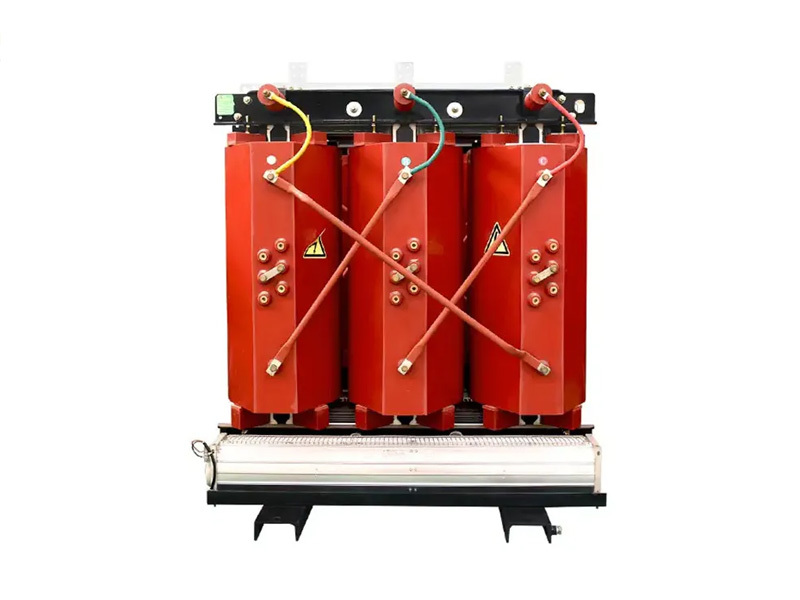He' Nan Chineng Electric Power Equipment Co., Ltd
How Low-Voltage Distribution Cabinets Enhance Energy Efficiency: A Comprehensive Guide
May 15,2025
How Low-Voltage Distribution Cabinets Enhance Energy Efficiency
Table of Contents
- 1. Introduction to Low-Voltage Distribution Cabinets
- 2. The Importance of Energy Efficiency in Electrical Systems
- 3. What Are Low-Voltage Distribution Cabinets?
- 4. Design Features and Benefits of Low-Voltage Distribution Cabinets
- 5. Energy-Saving Technologies Integrated into Distribution Cabinets
- 6. Case Studies: Successful Implementation of Low-Voltage Distribution Cabinets
- 7. Best Practices for Utilizing Low-Voltage Distribution Cabinets
- 8. Future Trends in Energy Efficiency and Low-Voltage Distribution Cabinets
- 9. Conclusion
- 10. FAQs
1. Introduction to Low-Voltage Distribution Cabinets
Low-voltage distribution cabinets are critical components in electrical systems, facilitating the safe and efficient distribution of electrical power. As businesses seek ways to enhance their operational efficiency, these cabinets have gained prominence due to their capacity to improve energy usage significantly. By managing energy distribution effectively, low-voltage distribution cabinets contribute to sustainable practices while reducing operational costs.
2. The Importance of Energy Efficiency in Electrical Systems
In our increasingly energy-conscious world, optimizing energy efficiency is not merely a trend but a necessity. Electrical systems account for a significant portion of energy consumption in various industries. Enhancing energy efficiency through smart design and technology can lead to substantial cost savings, reduced carbon footprints, and compliance with regulatory standards. Low-voltage distribution cabinets serve as a vital solution in this endeavor, offering various mechanisms to optimize energy usage.
3. What Are Low-Voltage Distribution Cabinets?
Low-voltage distribution cabinets are enclosures containing electrical components that distribute and control electrical energy at voltages typically below 1000 volts. These cabinets house devices such as circuit breakers, fuses, and busbars, which manage the safe distribution of power to various loads in a facility. By centralizing and organizing electrical distribution, low-voltage distribution cabinets enhance safety, reliability, and efficiency.
4. Design Features and Benefits of Low-Voltage Distribution Cabinets
Low-voltage distribution cabinets incorporate several design features that contribute to energy efficiency:
4.1 Modular Design
Modular designs allow for easy scalability. Businesses can expand their electrical systems without replacing entire cabinets, thus optimizing resource use and minimizing waste.
4.2 Intelligent Monitoring Systems
Modern distribution cabinets are equipped with intelligent monitoring systems that provide real-time data on energy consumption. This information helps businesses identify patterns and areas for improvement, leading to more informed decisions regarding energy use.
4.3 Compact Size
The compact design of low-voltage distribution cabinets saves space and allows for more efficient layouts in facilities, reducing material and energy costs associated with larger enclosures.
4.4 Enhanced Cooling Mechanisms
Effective cooling mechanisms within these cabinets prevent overheating, which can lead to energy loss. Cooling technology allows equipment to function optimally, improving overall efficiency.
5. Energy-Saving Technologies Integrated into Distribution Cabinets
Low-voltage distribution cabinets are increasingly incorporating advanced technologies aimed at boosting energy efficiency. Some of these technologies include:
5.1 Variable Frequency Drives (VFDs)
VFDs adjust the speed of electric motors based on demand, reducing energy wastage. Integrating VFDs into distribution cabinets can significantly lower operational costs in facilities with variable load conditions.
5.2 Smart Grid Integration
Linking low-voltage distribution cabinets to smart grids enables two-way communication between utilities and facilities. This connection optimizes energy use and supports demand response initiatives.
5.3 Energy Storage Solutions
Incorporating energy storage systems allows facilities to store excess energy generated during low-demand periods. This stored energy can be utilized during peak demand, further enhancing efficiency.
6. Case Studies: Successful Implementation of Low-Voltage Distribution Cabinets
Examining real-world examples highlights the practical benefits of low-voltage distribution cabinets in enhancing energy efficiency.
6.1 Manufacturing Sector
A leading manufacturing facility implemented low-voltage distribution cabinets equipped with intelligent monitoring systems. This upgrade resulted in a 20% reduction in energy consumption within the first year, demonstrating the cabinets' effectiveness in managing energy distribution.
6.2 Commercial Buildings
A large commercial building retrofitted its electrical systems with low-voltage distribution cabinets featuring VFDs. The outcome was a significant decrease in energy costs and improved tenant satisfaction due to enhanced environmental controls.
7. Best Practices for Utilizing Low-Voltage Distribution Cabinets
To maximize the benefits of low-voltage distribution cabinets, businesses should adopt several best practices:
7.1 Regular Maintenance
Conducting routine maintenance on distribution cabinets ensures they operate efficiently and reduces unexpected downtime.
7.2 Staff Training
Training staff on the capabilities and functions of low-voltage distribution cabinets empowers them to utilize these systems effectively, leading to better energy management.
7.3 Data Analysis
Utilizing data from intelligent monitoring systems allows businesses to identify inefficiencies and implement targeted improvements.
8. Future Trends in Energy Efficiency and Low-Voltage Distribution Cabinets
As technology evolves, so do the capabilities of low-voltage distribution cabinets. Emerging trends include:
8.1 Increased Automation
Automation in energy distribution will enhance efficiency, allowing for adaptive responses to changing energy demands and conditions.
8.2 Advanced Analytics
The integration of AI and machine learning into monitoring systems will enable predictive analytics, helping businesses anticipate energy needs and optimize usage accordingly.
8.3 Sustainability Focus
With growing emphasis on sustainability, manufacturers are expected to design low-voltage distribution cabinets with eco-friendly materials and energy-efficient technologies.
9. Conclusion
Low-voltage distribution cabinets play a pivotal role in enhancing energy efficiency across various sectors. Their design features and integration of advanced technologies facilitate effective power management, ultimately leading to significant cost savings and reduced environmental impact. As the demand for energy efficiency continues to rise, investing in low-voltage distribution cabinets will be crucial for businesses aiming to maintain a competitive edge.
10. FAQs
What are the primary benefits of using low-voltage distribution cabinets?
Low-voltage distribution cabinets enhance safety, improve energy efficiency, and provide centralized control of power distribution, leading to reduced operational costs.
How do low-voltage distribution cabinets contribute to energy savings?
By incorporating technologies like VFDs and intelligent monitoring systems, these cabinets optimize energy distribution and reduce wastage.
Are low-voltage distribution cabinets suitable for all types of facilities?
Yes, they are versatile and can be used in various applications, including industrial, commercial, and residential buildings.
What maintenance strategies should be implemented for low-voltage distribution cabinets?
Regular inspections, cleaning, and monitoring of systems will ensure optimal performance and longevity.
How can businesses assess the effectiveness of their low-voltage distribution cabinets?
By analyzing data from monitoring systems and comparing energy consumption before and after installation, businesses can evaluate improvements in efficiency.
PREVIOUS:










